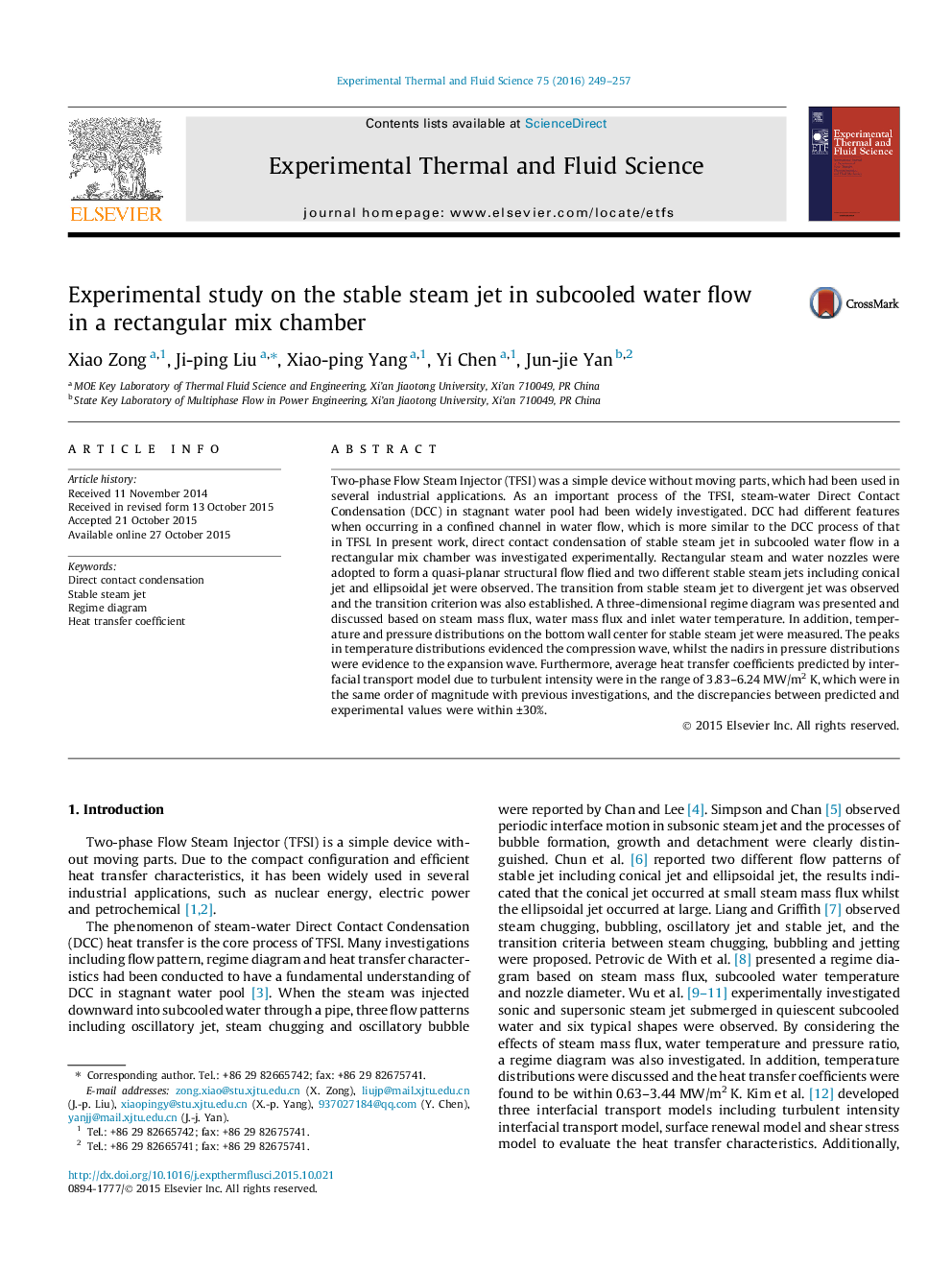| کد مقاله | کد نشریه | سال انتشار | مقاله انگلیسی | نسخه تمام متن |
|---|---|---|---|---|
| 651152 | 1457401 | 2016 | 9 صفحه PDF | دانلود رایگان |
• Experimental study on the stable steam jet in subcooled water flow.
• Three-dimensional regime diagram was presented and discussed.
• Temperature and pressure distributions for stable steam jet were measured.
• Predicted heat transfer coefficient by interfacial transport model due to turbulent intensity were in the range of 3.83–6.24 MW/m2 K.
Two-phase Flow Steam Injector (TFSI) was a simple device without moving parts, which had been used in several industrial applications. As an important process of the TFSI, steam-water Direct Contact Condensation (DCC) in stagnant water pool had been widely investigated. DCC had different features when occurring in a confined channel in water flow, which is more similar to the DCC process of that in TFSI. In present work, direct contact condensation of stable steam jet in subcooled water flow in a rectangular mix chamber was investigated experimentally. Rectangular steam and water nozzles were adopted to form a quasi-planar structural flow flied and two different stable steam jets including conical jet and ellipsoidal jet were observed. The transition from stable steam jet to divergent jet was observed and the transition criterion was also established. A three-dimensional regime diagram was presented and discussed based on steam mass flux, water mass flux and inlet water temperature. In addition, temperature and pressure distributions on the bottom wall center for stable steam jet were measured. The peaks in temperature distributions evidenced the compression wave, whilst the nadirs in pressure distributions were evidence to the expansion wave. Furthermore, average heat transfer coefficients predicted by interfacial transport model due to turbulent intensity were in the range of 3.83–6.24 MW/m2 K, which were in the same order of magnitude with previous investigations, and the discrepancies between predicted and experimental values were within ±30%.
Journal: Experimental Thermal and Fluid Science - Volume 75, July 2016, Pages 249–257
